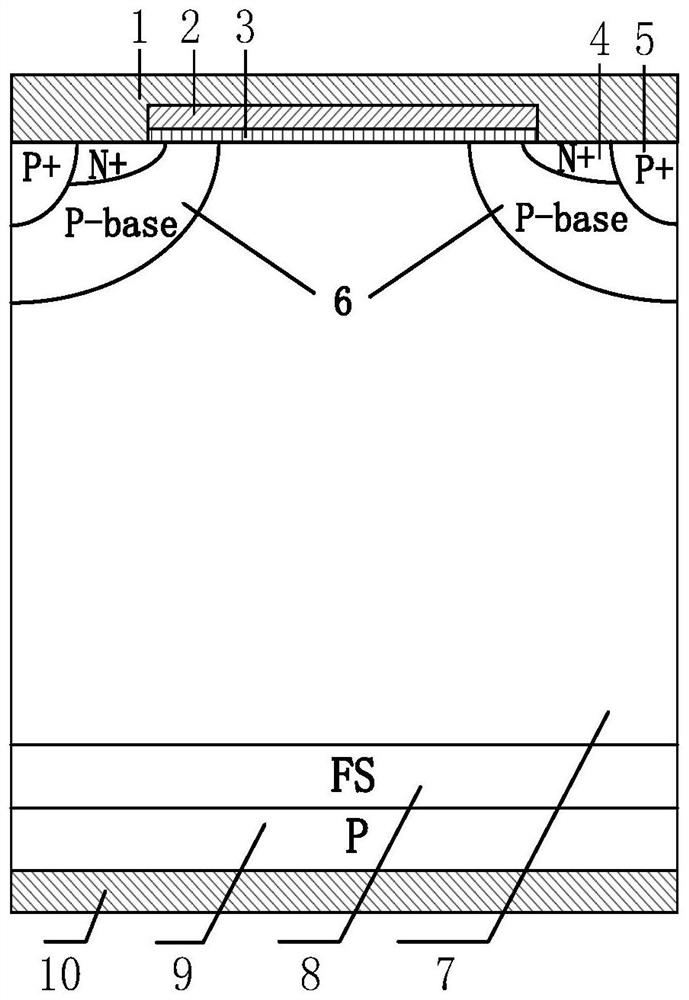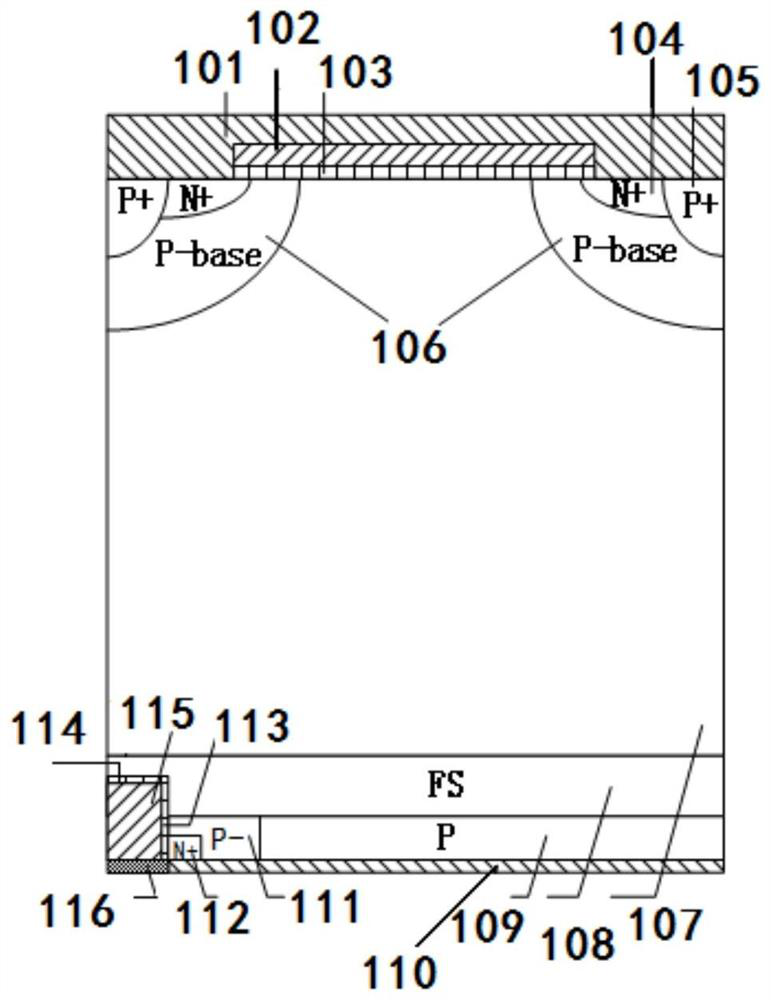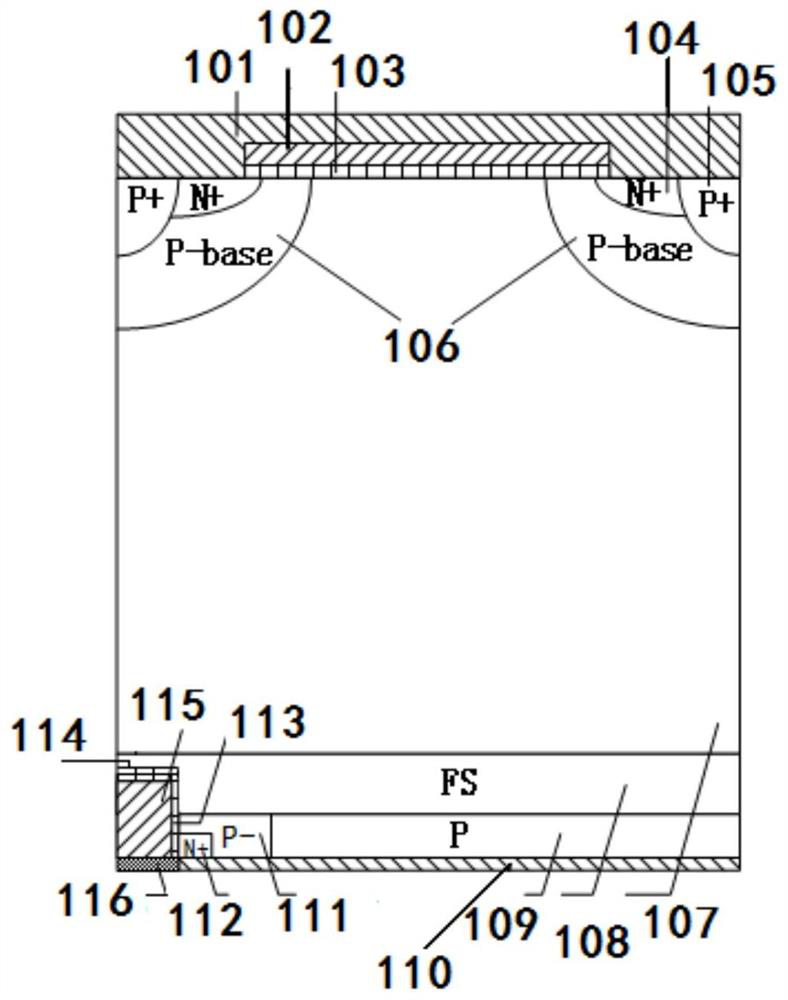A bipolar power semiconductor device and its preparation method
A technology of power devices and semiconductors, which is applied in the field of bipolar semiconductor power devices and their preparation, and can solve the problems of increasing the cost of using devices and increasing the overall power consumption
- Summary
- Abstract
- Description
- Claims
- Application Information
AI Technical Summary
Problems solved by technology
Method used
Image
Examples
Embodiment 1
[0088] This embodiment provides a MOS control anode IGBT device, the cell structure of which is as follows figure 2 As shown, a bipolar semiconductor power device with a MOS control anode includes an anode structure, a drift region structure, a cathode structure and a control gate structure; the anode structure includes a P-type anode region 109 and a The anode metal 110; the drift region structure includes an N+ field stop layer 108 and an N-type drift region 107 located on the upper surface of the N+ field stop layer 108, and the N-type drift region 107 is located on the upper surface of the P-type anode region 109; The cathode structure includes a P-type body region 106, a P+ emitter region 105, an N+ emitter region 104 and a cathode metal 101, the P+ emitter region 105 and the N+ emitter region 104 are located on the top layer of the P-type body region 106, and the upper surfaces of the two are connected to the cathode metal 101, the cathode structure is located on the to...
Embodiment 2
[0091] This embodiment provides a MOS control anode IGBT device, the cell structure of which is as follows image 3 As shown, the difference from Embodiment 1 is that the thickness of the second anode trench gate dielectric layer 114 in the anode trench gate structure is greater than the thickness of the first anode trench gate dielectric layer 113, specifically, the second anode trench gate The thickness of dielectric layer 114 is about The thickness of the first anode trench gate dielectric layer 113 is about The purpose of this design is to reduce the parasitic capacitance of the anode trench gate electrode while controlling the turn-on voltage of the anode trench gate, thereby reducing the adverse effect of the parasitic parameters of the anode MOS structure on the IGBT device parameters.
Embodiment 3
[0093] This embodiment provides a MOS control anode IGBT device, the cell structure of which is as follows Figure 4 As shown, the difference from Embodiment 1 is that the N+ source region 112 in the anode MOS structure is removed and replaced with a P-type base region 111 . Since the concentration of the P-type base region 111 is lower than that of the P-type anode region 109, when the device is working, the anode trench gate controls the channel inversion on the side, thereby achieving the effect of bypassing the anode diode. At this time, the P-type anode region 109 forms an ohmic contact with the anode metal 110 , and the P-type base region 111 forms a Schottky contact with the anode metal 110 .
[0094] When the device is working, the Schottky junction formed by the anode metal 110 and the P-base region 111 is reversely biased. When the control gate structure forms a conductive channel, the carriers passing through the channel of the control gate structure are reversely ...
PUM
 Login to View More
Login to View More Abstract
Description
Claims
Application Information
 Login to View More
Login to View More - R&D
- Intellectual Property
- Life Sciences
- Materials
- Tech Scout
- Unparalleled Data Quality
- Higher Quality Content
- 60% Fewer Hallucinations
Browse by: Latest US Patents, China's latest patents, Technical Efficacy Thesaurus, Application Domain, Technology Topic, Popular Technical Reports.
© 2025 PatSnap. All rights reserved.Legal|Privacy policy|Modern Slavery Act Transparency Statement|Sitemap|About US| Contact US: help@patsnap.com



